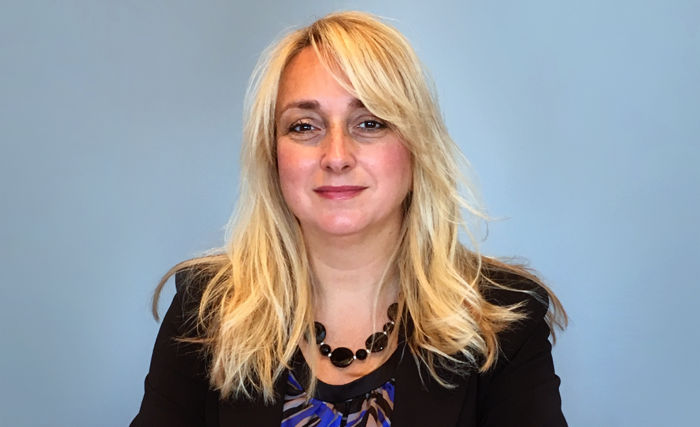Incidents such as the Somali pirate crisis and a spike in terrorism attacks, are driving an increase in demand for Kidnap and Ransom insurance among Canadians. Financial advisors may want to consider offering this special risk coverage to their clients, say some product providers.
Hunter McCorquodale, a firm known for offering products for the hard-to-insure market, held a seminar this summer for insurance brokers and financial advisors to raise awareness about kidnap and ransom (K&R) insurance.
What is it?
Sophie Strezos-Egnatis, Hunter McCorquodale’s vice-president for business development explained that K&R is a reimbursement product which insures expenses related to kidnapping, extortion, illegal detention, hijacking and other events which can happen and includes priority access to a dedicated crisis management team.
“Such teams provide an immediate “hand-holder” at an incident site then deploys a trained crisis manager within 24 hours of a verified event to assemble and train a negotiation team and provide rapid in-depth analysis and assessments to support critical decision making,” says Strezos-Egnatis.
The crisis team remains on the site until the incident is resolved, which can sometimes take a year or more. Strezos-Egnatis says when a specialist was in place, the hostage was released safely 90 per cent of the time.
“This is the real value of insured coverage, knowing how to deal with various perpetrators even when ransoms cannot be paid due to terrorism legislation,” she says.
The Olive Group is a London company that works with K&R insurance companies to respond to crises around the world when they happen. Mark Harris, Olive Group, vice president of crisis response services, says they’re advisors only and you will never see them jumping out of a helicopter to rescue your client.
“We’re walking, talking crisis management advisors with a great deal of experience to aid the client. We don’t investigate the crime, we do not attempt to locate or rescue the victim, and we don’t communicate directly with the kidnappers” Harris says.
Who is buying it?
Canadians from all walks of life are buying K&R insurance for many different reasons than you might think. At the event hosted by Hunter McCorquodale, Strezos-Egnatis said the traditional clients are large corporations, media organisations and businesses dealing with high risk countries. K&R insurance is growing amongst singles and families from middle class to high net worth who might be at high risk if members are volunteering, travelling, living or working abroad in unstable or high risk countries.
Strezos-Egnatis says traditionally clients bring up concerns about a potential destination, but advisors should be proactive and listen to red flags if they feel K&R insurance could be relevant to the client.
“The best way to approach the conversation is to ask the client if they are comfortable with the countries that they or their children are travelling to and do they have a contingency plan if something goes wrong. This should be enough to get the ball rolling,” she says.
An example of diversity in K&R insurance is a wealthy Canadian man belonging to a high risk ethnic community, where members can be targeted in mafia style criminal activity.
“There are areas in Canada, where there is risk to specific ethnic community members. [The client] was also in a targeted industry and he felt uncomfortable. His premium was on the higher end due to his situation,” says Strezos-Egnatis.
K&R insurance doesn’t exclusively involve kidnap or ransom cases. One Canadian took out a policy for his daughter who was moving to Malaysia to teach at a private school plus travel in Asia.
Strezos-Egnatis says they ended up having to call the crisis team; “There was a situation with the school and the teachers were not happy with the environment. They wanted to break their contract. The headmaster threatened them that bad things would happen if they did. (The clients) didn’t know how to interpret this.”
In this situation they had a mysterious disappearance extension option, in case she was not heard from in two days and the cost of the policy was only $1,000, Strezos-Egnatis says.
What happens if the worst unfolds and the crisis response team gets called in? Speaking to The Insurance and Investment Journal, Harris says the first thing the client needs to do is notify the response group when there’s an issue, a concern or if they’re aware something has taken place.
“We start to analyse the situation and we provide telephone and email advice to them, while we look at what the best way of supporting them. If we have a family, we would probably get one of our consultants to go to the family,” he says.
This consultant would liaise with the family to develop a crisis management committee. They’d send another consultant to the location and start looking at how to support the individual in resolving the issue.
“We remain deployed with the client, advising them on the analysis of the matter, what might happen, how it might play out, so we can give them a route map. Then we advise them on their journey, every step of the way,” he says.
For example, Harris says perhaps an uncle or some other family member might take the position of being in communication with the perpetrator. The crisis team would train and rehearse with this person and produce a suggested script approved by the family crisis committee.
“That person would interact with the kidnappers or the perpetrator in order to establish dialogue and get proof the individual is alive and we’re talking to the right people, so it turns into a negotiation in order to secure a safe release,” he says.
Harris says his firm’s role is to support the family throughout this difficult process. The family, though, remains the decision maker. The main emphasis is a family crisis committee, which is usually a four to five person committee consisting of immediate family but also outside, such as extended family or friends. This could be someone who adds something, perhaps a lawyer.
“You’ve got to try to take the emotion out of the situation and provide objectivity and informed decision making, rather than the heart. That’s why we throw it open (to more) than just immediate family, to get some objectivity in there,” he says.
What does an advisor need to know?
Frances White, associate – life & group benefits advisor at Guthrie Financial Services, says after meeting so many advisors who don’t know K&R insurance exists, she recommends advisors do research and know the options available for their clients.
“I believe in the value of insurance and as this is a situation where the value certainly outweighs the cost, I think that it should be made available on a broader platform,” she says.
Strezos-Egnatis says if a client is interested in obtaining coverage, their advisor should speak to a specialist underwriter who can educate and provide consultation on the client’s risk.
“Advisors should think about recommending coverage when they become aware that their clients are traveling to potentially high risk countries. If they are unsure of the level of risk, they can call and discuss the travel with an underwriter and obtain security reports to confirm the level of risk,” she says.
Advisors need to do research on the response provider, says Harris, and make sure they have the experience, the capability and capacity and is going to be around on a Friday night at 11:30 p.m. when you do need them.
“You want someone who can help you from the get-go,” he says.
K&R insurance underwriting is different than for products in the life and health arena. Strezos-Egnatis says prices are mostly affected by location and duration of travel, the nature of work or travel activities, their personal or corporate net assets and the amount of coverage which will be purchased.
“In addition to differences in underwriting, the most unique feature about this plan is that if insurance is purchased, it must be kept in strict confidence. This is a contractual obligation. Breach of this obligation can allow the insurer to void the coverage,” she says. This is necessary since revealing that they have this coverage could potentially expose clients to a higher risk of kidnapping, i.e., criminals might think it would be easier to get paid a ransom.




